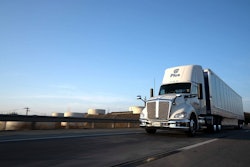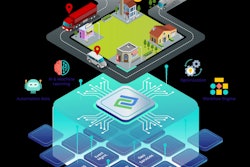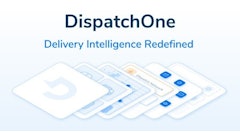
It’s no surprise that customer confidence in the shipping industry dipped tremendously in 2020. Supply chains were overworked, and delivery demand was at a record high. According to a recent survey, Anyline found that 53% of consumers indicated they received damaged packages in 2020 and 43% had packages lost in transit. If retailers cannot adapt to avoid these problems, poor experiences will drive shoppers away.
This heightened doubt in logistics providers does not bode well for the growing demand for same-day delivery and last-mile logistics that is expected to reach $50.95 billion by 2022. To keep customers loyal, retailers have to prioritize visibility, control and accountability in the supply chain.
After making a purchase, the most important thing in a customer’s mind is the timeframe in which they can expect their packages to arrive. Anyline research found that inconsistent or unreliable updates on shipment status were the biggest pet peeves for customers today. Tracking numbers, updated delivery information and consistent messaging can lessen the complications; however, customers also want actionable information that puts them in control of the delivery options. Furthermore, when errors occur, consumers believe brands should make up for the issue and be proactive in keeping the buyer informed.
So, which technologies are transforming last-mile logistics and have the potential to mitigate top shipping pain points?
Taking delivery to the skies may not be best
Customers expect a lot from their favorite retailers, putting pressure on last-mile logistics companies to offer a seamless and efficient delivery, every time. To meet these demands, retailers may look at the potential advantages of several innovative solutions that make it easier than ever to deliver goods. The challenge, however, is recognizing which new technology will work for each retailers’ unique needs and which are overhyped.
One of the most talked about solutions today is the drone. But, despite the buzz, drones are not a viable option for most deliveries for several reasons. First, drones are impractical for use in cities and will come with a laundry list of regulations for Unmanned Aircraft Systems (UAS). In addition, they are likely to lead to noise complaints or accidents with other aircrafts as more of them are in use. There are other technology solutions out there that are much more efficient and seamless to integrate.
Click here to hear about more practical use for drones in the warehouse:
Efficiencies can be gained through AI, AR and ML
By pairing last-mile driver data – like location, traffic and delivery loads – with artificial intelligence (AI) and machine learning (ML), couriers can benefit from huge efficiency gains and increased visibility into potential delays. These algorithms are developed on the job, and it gives supply chain managers the chance to implement dynamic routing and delivery scheduling while also generating vital performance analytics. This data can inform cost-saving measures that can lower average mileage and cost-per-stop. Despite the long-term benefits of machine learning, these solutions are not for every retailer as the cost to implement is high and the integration can be challenging.
As an alternative, retailers working on a tighter budget or timeline should consider augmented reality (AR). Integrating an AR overlay into couriers’ smart or wearable devices gives them the power to scan across dozens of barcodes at once and identify the right package quickly to save valuable minutes on the road. AR can also streamline handling requirements and inform drivers when they need to prioritize the delivery of a perishable good or acquire ID verification from the recipient. Unlike AI and machine learning solutions, AR is low cost and quick and easy to integrate.
Centralizing delivery allows for consumer control and certainty
There are several new, last-mile innovations that are relocating the point of delivery to simplify or shorten the shipping process for the customer. Unlike implementing new technology like AI or AR, all three of the following solutions are cheap, easy to integrate and only take a short time to set up.
The first method is click and collect and is already used by the likes of many big box retailers. By letting customers pick up their goods in store, it allows them to get their purchases on their own time and reduces delivery trips for the retailer. This method is easy for customers to adapt to and cost effective, which is why 34% of companies reported using this strategy in the last year, according to the Anyline survey.
Similarly, retailers can test out lockers and transport drop-off locations. Lockers provide an easy way to reduce failed delivery attempts and stolen packages by allowing the customer to pick up their packages whenever they can. Lockers can be anywhere, but popular transport drop-off locations like train stations are often optimal. These methods give the customers options while also reducing delivery truck congestion in busy cities. When these self-scheduling locations are paired with tracking systems, the information keeps customers in control and removes the frustration of uncertainty.
Smartphones offer the benefit of user intuition
Mobile data capture is another efficient way to improve last-mile fulfillment. By incorporating scanning technology into smartphones and wearables, data about the package or its delivery can be embedded into the information stream for each package and overlaid directly on the device screen. This way, if a customer asks a delivery-based question while in store, it can be answered via devices the employee already has. This creates a single source of truth, so customers always have updated information and reliable communication – two things they crave. Mobile data capture solutions like this are BYOD, or “bring your own device.” With no specialized equipment needed, companies can save money and implement and train quickly since employees are using a familiar device.
Choosing the right innovations for you
Last-mile innovations are not one-size-fits-all, and the wide range of options in the consideration set will likely grow. In fact, even more advances are brewing for this industry, including blockchain solutions like proof-of-delivery that create a digital ledger of every transaction recorded and give full visibility to every party involved.
In the meantime, however, there are tried-and-true innovations that can work with any budget, timeline or technical skill level. The point is, there will always be new innovations available to bring retailers’ customer journey to the next level – all they have to do is choose the one that best addresses both the business and their customers’ pain points.

![Pros To Know 2026 [color]](https://img.sdcexec.com/mindful/acbm/workspaces/default/uploads/2025/08/prostoknow-2026-color.mduFvhpgMk.png?auto=format%2Ccompress&bg=fff&fill-color=fff&fit=fill&h=100&q=70&w=100)








![Pros To Know 2026 [color]](https://img.sdcexec.com/mindful/acbm/workspaces/default/uploads/2025/08/prostoknow-2026-color.mduFvhpgMk.png?ar=16%3A9&auto=format%2Ccompress&bg=fff&fill-color=fff&fit=fill&h=135&q=70&w=240)







